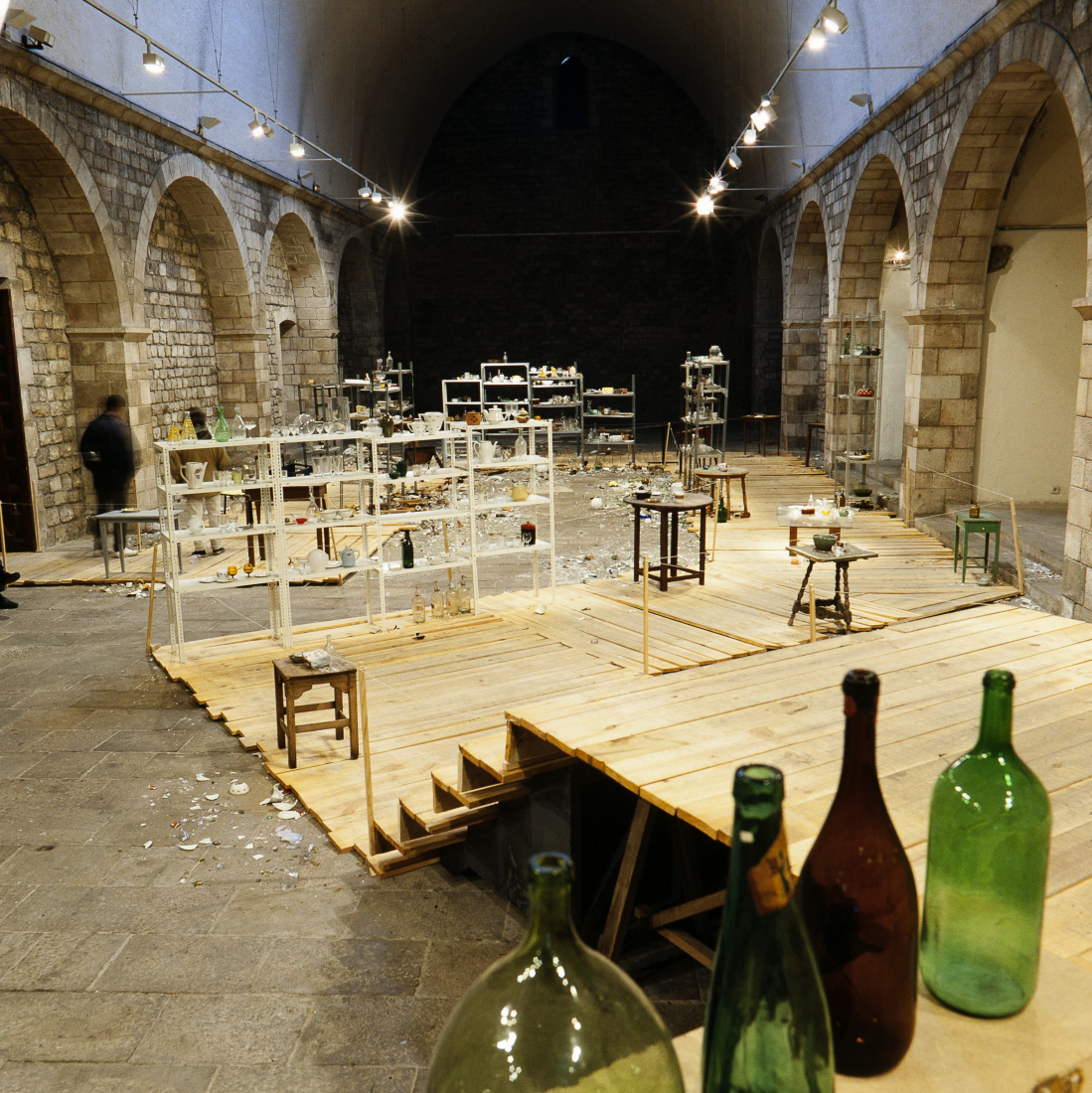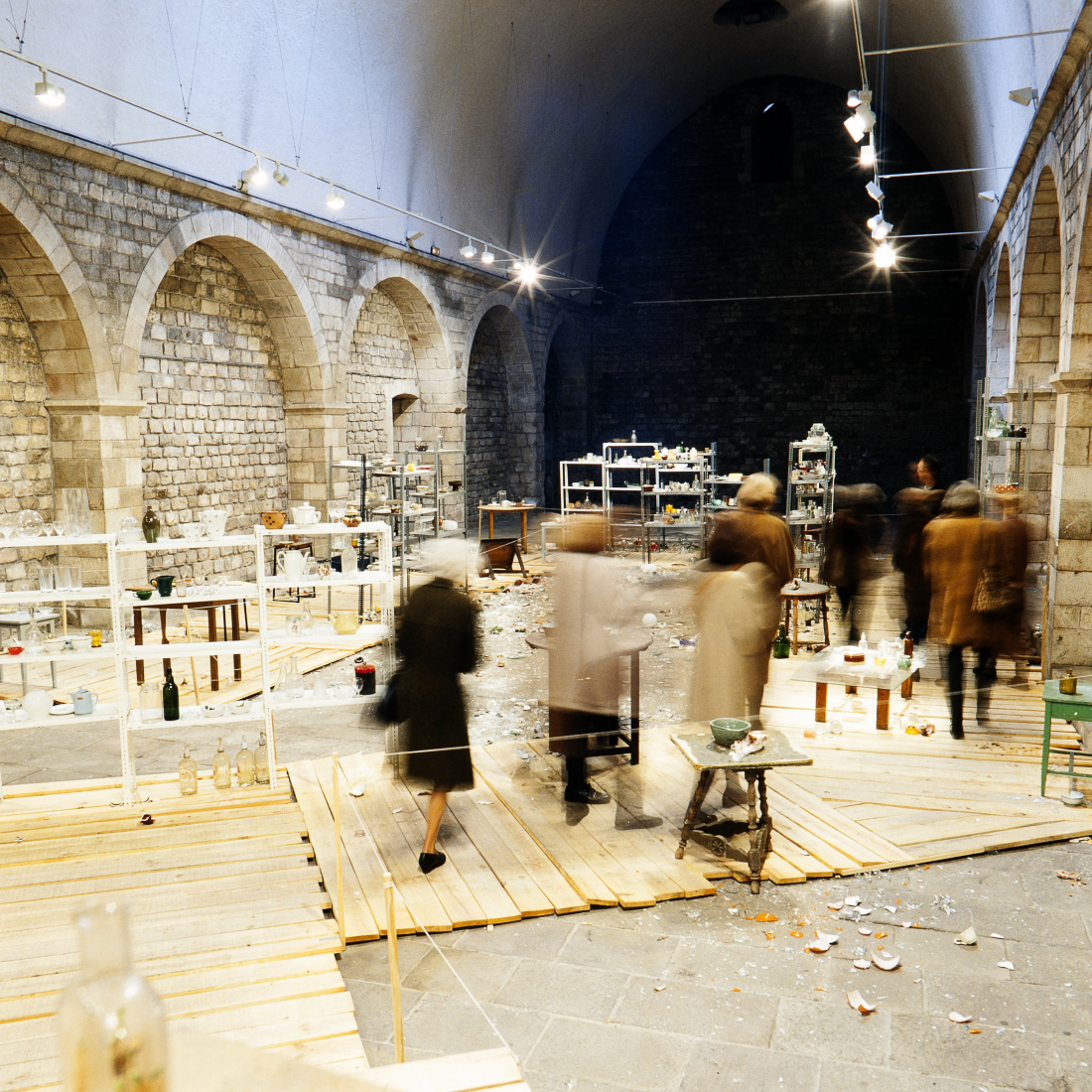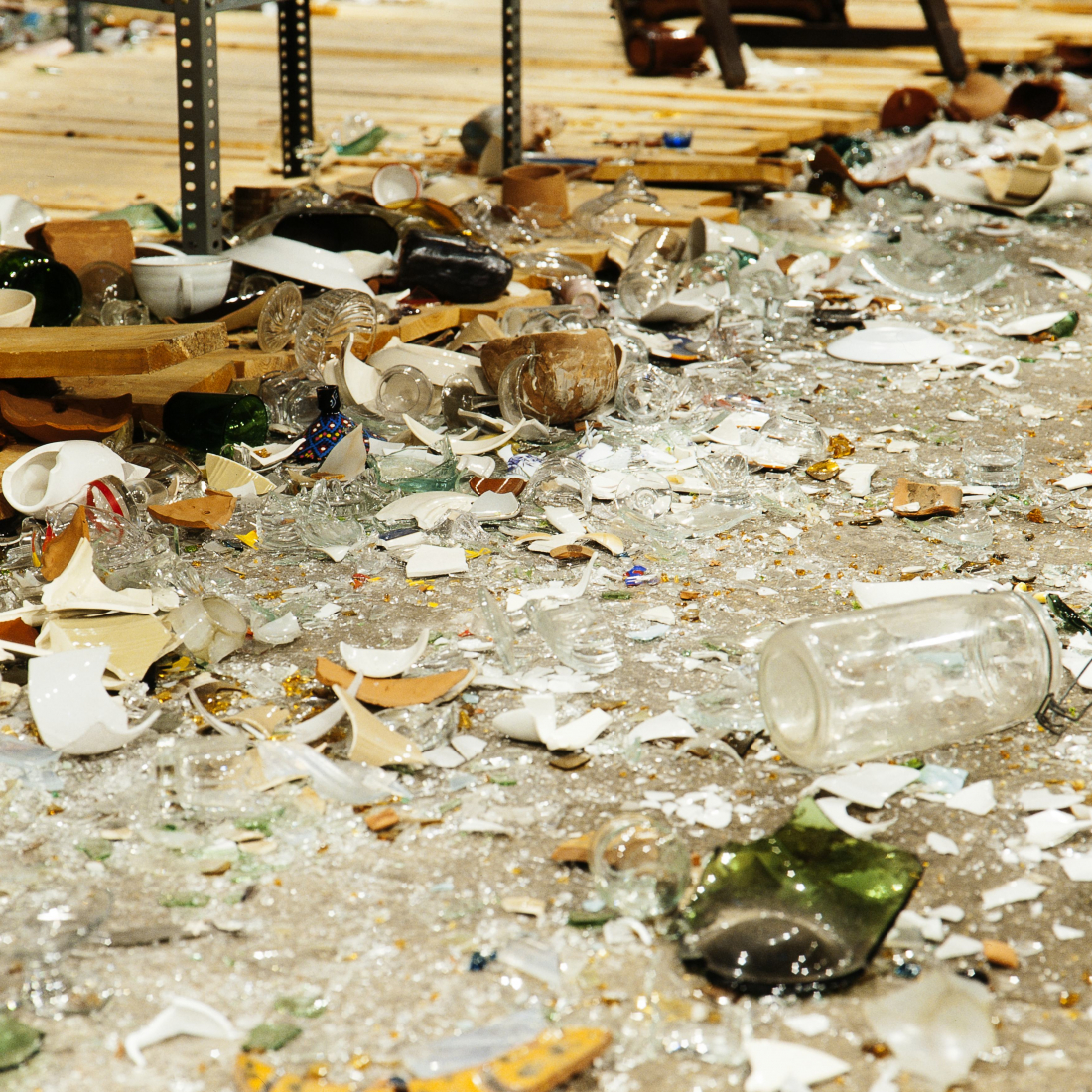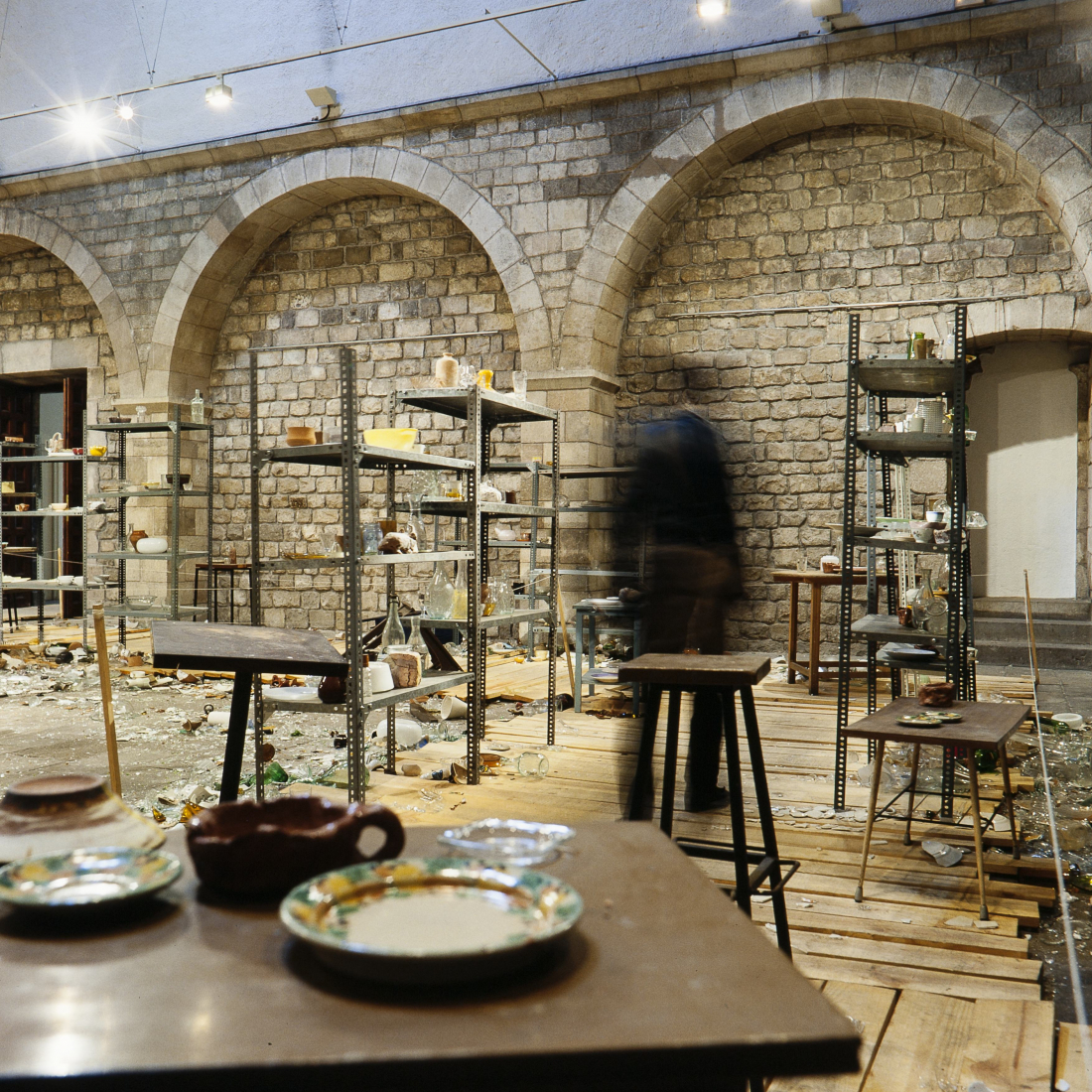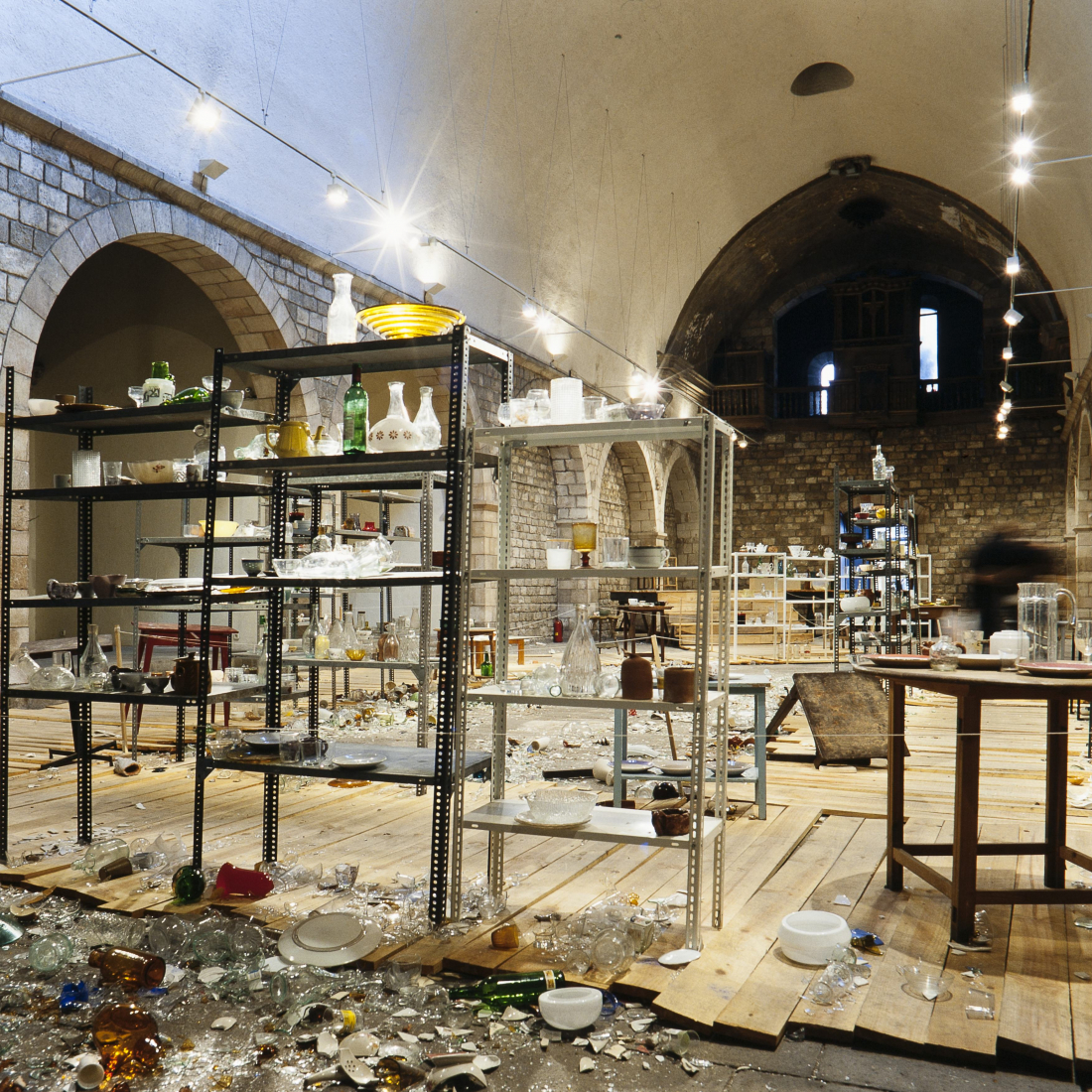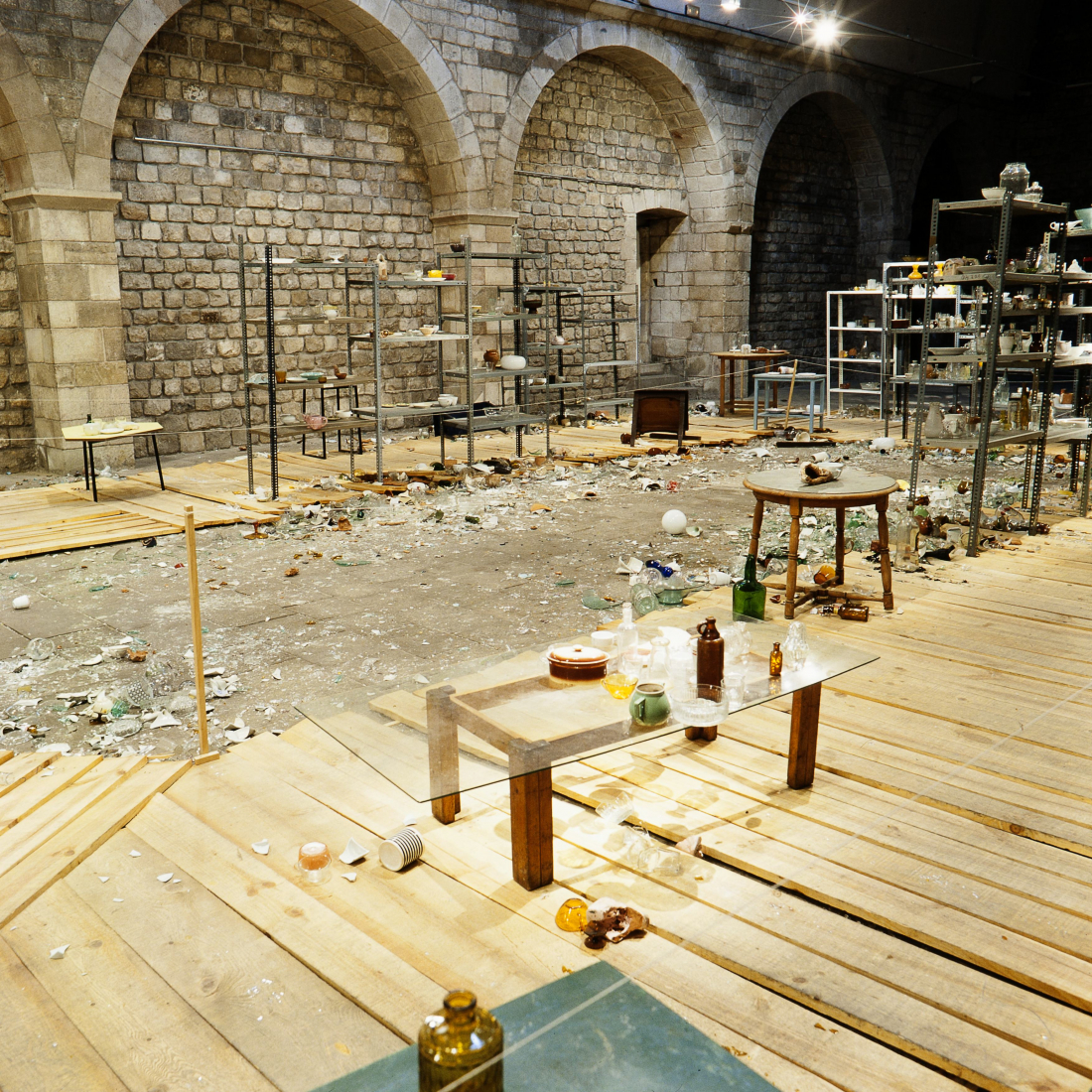Terremoto
Transient, transitory (but not transcendent)
Al fin, la mejor manera de viajar es sentir.
Sentirlo todo de todas las maneras.
Sentirlo todo excesivamente,
Porque todas las cosas son, en verdad, excesivas,
Y toda la realidad es un exceso, una violencia,
Una alucinación extraordinariamente nítida
Que vivimos todos en común con la furia de las almas,
El centro al que tienden las extrañas fuerzas centrífugas
Que son las psiques humanas en su armonía de sentidos.
Fernando Pessoa
Those who have written about the works of Tere Recarens and also those who know her are always talking about her calamitous nature and the good humor that her pieces entrust. Perhaps the Terremoto (1994-95) work that he presents at La Capella is not the funniest of those he has done so far - perhaps none of them is finally funny at all - but he maintains the way to make this characteristic artist: put everything in the key of playful experience. << To have fun and that others also have a good time, >> often says when they talk about their work. With a smile from ear to ear, Recarens is aware that this maximum confuses and overwhelms more than one who tries to translate the record of speech that the artist uses in his work and in his conversations - a tone very spontaneous and an air of story, comic strip, ballad, game or photo of family - to another level, presumably more serious and defining. But, instead of violating the spirit of the original discourse with serious questions (<< that means? >>), we decided to take it apart and naturally share the time with his works, this << pass-by It does not mean that it is a joke - or an artistic and intellectual "strategy" of a terrible child - and it begins to be drawn as a very interesting proposal for a framework of action and self- action
Like many of his works, Terremoto invites the viewer to participate without indicating the rules of the game. In this case, from the gateway to La Capella and almost as an extension of the street, Recarens has built a wooden floor that circulates in the silent space of the nave of the old church. On this platform the passer-by can walk and arrive to the side door of the building (for which theoretically it can also enter and make the route the reverse). Along the way, a collection of used objects of glass, ceramics and other fragile materials rests on different furniture, also of second or third hand. This intransigent journey of passage (it does not intend to take us to explore recaptured spaces of La Capella nor does it show us particularly interesting objects from the artistic, decorative or anthropological point of view) becomes peculiar at the moment we notice that we are not on firm ground. As if it were the poor version of an aged parquet, the wood of the earth shriek and relocate alarmingly with the weight of the pedestrian. As a direct consequence of the rhythm and the decision of our steps or those of others, the furniture shakes, the objects climb and, eventually, the latter, displaced by the terratremer towards the margins of the surfaces, slip and crash against the ground. It is our decision to slow down or accelerate the step, lighten it to bring about the minimum of accidents or to stimulate it to promote it, dull us to talk with someone in the middle of the route or to observe some of the objects that call us Attention, take on one subject to an irrepressible need to possess it, marvel at the diversity of this strange collection of andromins, ask about the history and the particular life of the objects, If one of them breaks ... I am not listening to imagined reactions but describing some of those that occurred the first time that Tere Recarens showed this work in smaller dimensions at the Galerie de l'Ecole d'Art from Marseilles.
In some of his work, Recarens shows his own behavior, his way of interacting with his friends, friends and acquaintances, his own experiences with his surroundings. The artist's drawings on the first page of this catalog show some of the bad moments of his friendship with Marta, Martín and Estefi. Through the ingenuity of the representation and the humor of the scene, the discomfort of the relationship is diluted in a funny cartoon of the imagined evil that the artist plans to return to. Today, Tere does not have César (1991-94), a cardboard box with two eyeshadows that had become his inseparable companion, to tell him secrets and those headaches that necessarily entail relations with others. So, solve the mood making some drawings that look extraordinarily to those of a girl of six years. The fantastic story of the ideal friend that the artist invented to share his everyday life is part of a world where the imagination transcends lucidity. César was right for his birth, had his story and many of us had used to see him in the streets, bars and cinemas of the city. One day it disappeared, but we have not forgotten about it, and today it begins to be legend.
In the photo Soap ball (1994), the artist shows herself playing in the pool with a sphere of 66 cm in diameter made of soap. The moment caught by the camera under water suggests a tactile and almost erotic relationship with the body with this toy built with poor material for the artist. I think that the closest reference to explain this beautiful image is also that of the children's world. In the first years of our lives, << learn >> and << have fun >> can be the same activity. Also at this age the curiosity is confused by << knowing >> the world and << living it >>, concepts that translate into the need to taste, touch, caress and feel on the skin as the bodies and objects they give heat, color and energy. In the work of Recarens, along with the freshness of the stroke and look, there is always some aspect that indicates that candidacy is not interested in moral value. In this case, we realize that the ball is made of a material that is diluted in contact with water and that soap is, in fact, a cleaning instrument. Subtly, without moralisms or epicúural exaltations, the image conveys the sensation of a refreshed dip that purifies gestures and words of everything that prevents a loose and spontaneous movement. Further on, a leap to immerse yourself in the transience of everyday experience with the spirit of living it as a passage of joy and celebration not only of the body but, more broadly, of the materiality of existence .
Other works by Recarens, such as Terremoto, suggest us to check how we ourselves behave in a situation given by the artist. The floor of the platform does not move under our feet by chance. Instability and falling objects have been deliberately traced by the artist, whom his friends and relatives affectionately call << earthquake >>. These contexts-situations where we are invited to entertain us do not ask for unaccustomed actions, we demand naturalness-or the surprise that each of us give ourselves. Even the monolithic, serene and transcendent space of La Capella transparent, without shame, its vulnerability when we feel moan and shudder, when explicitly, provisionally and sensibly recognized: the journey emphasizes how the sacred space, once it has become democratized, becomes a mere passage.
In the work Without title 2 (1995), Recarens placed at the entrance of an art gallery several newspaper papers on the newly-scrubbed floor, which remained apparently wet - slippery and slim - throughout the entire exhibition To avoid accidents and to respect the work done, it was necessary, then, to move on quietly above all by treading them. A Te caes los dentes (1994), Recarens planted the flooring of Espai 13 of the Miró Foundation with candies, whereby we walked under the nice look of a giant Pinocchio that showed us how burlesque its quilometric nose. The scenario became, in this case, a territory of fiction. In fact, fiction and reality form for Recarens the two sides of the same coin. << I never say lies >>, says one of the candy wraps of that magnificent installation, and the affirmation is interesting in the context of the story as a literary genre - the story of Pinocchio is a tale, in Caesar too - where lies would not be guilty of transgressions of falsifying reality but the revelation of the human capacity to invent, create and live from a kaleidoscopic point of view reality and, ultimately, transform it.
The creation of these scenarios, real or fiction, assures the presence of people in their work, but not only as an indispensable part of the artistic proposal but because human relations - the absolute priority of trust, dialogue and the interrelation with the others - they have a central place in thematic of their works. Perhaps for Recarens, friendship - a topic that is repeated in several works of his - is one of the only absolute values within the framework of the free game of fantasy and the reason he proposes, a world without agreed rules but where precisely not everything is allowed . And, in the contemporary context, claiming and living in this territory of real or fantastic personal stories-considered an insignificant, non-conclusive and logical field from the point of view of the utilitarian ethics that we are imposed- can be one of the new utopias necessary.
In this already emerging work body of Recarens, the peculiar importance of the artist's relationship with objects, the things that we live with, is also outlined. There are seasons that the artist makes a living by selling in the second hand markets objects that he collects in the streets. The atmosphere the market offers perhaps more fully the possibility of gathering under the same ambrella interests and activities that this artist can not comprehend: work, fun, art and human relationships. Earthquake objects come in much of these sources. They are of all kinds but in this situation all share an aspect: its fragility. We could say that, in the circumstance that we are presented, decontextualized on anonymous furniture, they exhibit nothing else about death that equalizes and questions the economic, use, decorative and even artistic values of things and makes them , in the end, in friendly objects or indifferent disorders.
Real and imaginary friends and friends eventually make up a round to play the blindfold (one of his most successful works has this title). From the middle of the circle, Tere Recarens, with blindfolded eyes on a red ribbon, strives to recognize us. Now, however, it touches me, and from the center of the text I am approaching the page; I turned the lines on the long fingers of my hand, with a face that I followed: tense skin, extremely open mouth, stubborn hair ... The electric girl could not stand the tickles and makes a sound and familiar laughter: the Tere?



